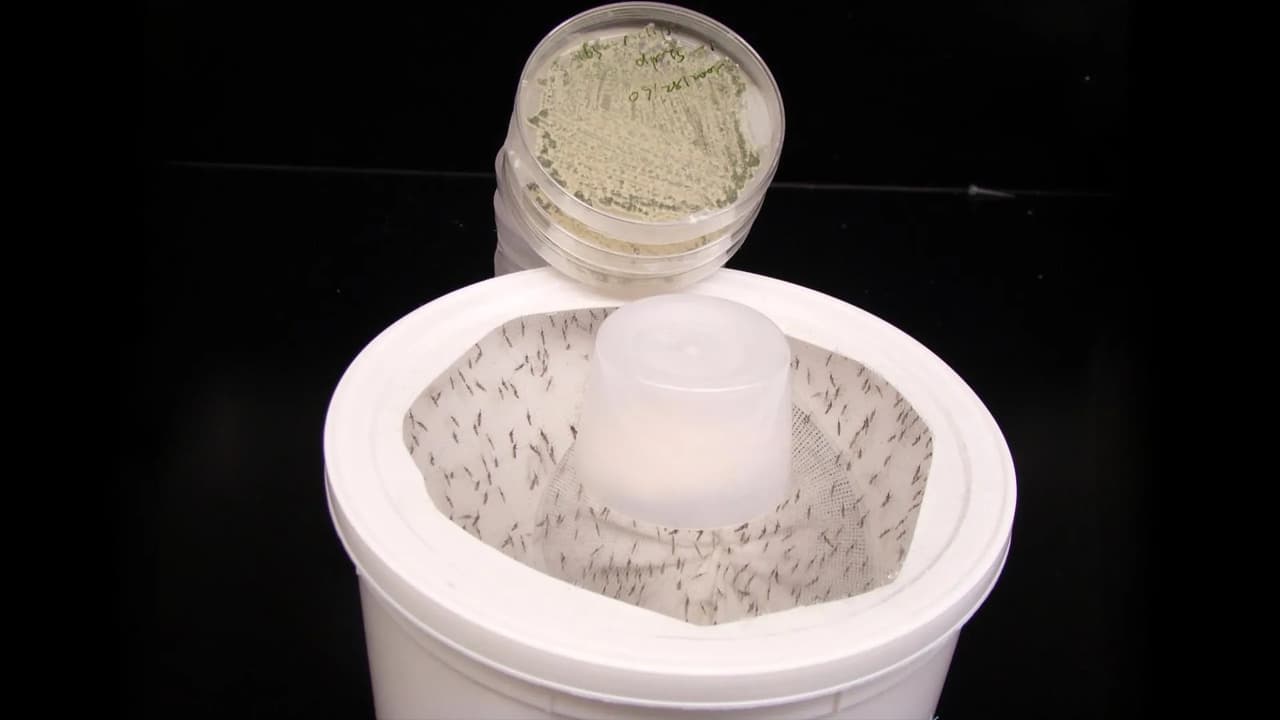Scientists have developed a floral-scented fungus that attracts and kills mosquitoes using a natural perfume compound, longifolene. Safe, eco-friendly, and affordable, this could revolutionize mosquito control as climate change expands their reach.
In a breakthrough that sounds straight out of science fiction, researchers have created a fungus that smells like flowers—but is lethal to mosquitoes.
The international team, led by scientists at the University of Maryland, engineered a strain of Metarhizium fungus to emit longifolene, a floral scent that irresistibly attracts mosquitoes. Once the insects approach, the fungus infects and kills them—turning a sweet perfume into a deadly weapon.
The findings, published in Nature Microbiology on October 24, 2025, could mark a major leap in the global fight against mosquito-borne diseases like malaria and dengue, which claim hundreds of thousands of lives every year.
How the Perfumed Fungus Works
“Mosquitoes rely on floral scents to find nectar, their main energy source,” explained Professor Raymond St. Leger, a Distinguished University Professor of Entomology at the University of Maryland and co-author of the study. “We realized that if some fungi already smell a bit like flowers, we could amplify that scent to lure mosquitoes in—and let nature take care of the rest.”
By enhancing the fungus’s ability to produce longifolene—a natural compound used in perfumes—the researchers effectively created a biological trap. When mosquitoes land on surfaces containing the fungal spores, they quickly become infected and die within days.
In controlled lab tests, this floral fungus wiped out 90–100% of mosquitoes, even when competing with the scent of real flowers or human hosts. Despite its potency, it’s completely harmless to humans.
Safe, Targeted, and Eco-Friendly
Longifolene already has a long safety record in fragrances, making the engineered fungus a safer alternative to chemical pesticides.
“The beauty of this system is that it’s targeted,” said St. Leger. “It only affects mosquitoes, and the scent compound breaks down naturally in the environment.”
Unlike chemical insecticides—against which mosquitoes have developed resistance—this biological approach is far harder for them to evade. To stop responding to longifolene, mosquitoes would essentially have to give up on flowers altogether, which is vital for their survival.
Affordable and Scalable
Another advantage is cost. The fungus can be easily grown on inexpensive materials such as rice husks, wheat scraps, or chicken droppings, making it an accessible solution for communities in regions most affected by mosquito-borne diseases.
This affordability could prove crucial as global warming expands mosquito habitats. Areas that once had little to fear—such as parts of the United States—may soon face tropical diseases once confined to equatorial regions.
“Mosquitoes are thriving in the very conditions we’re creating,” St. Leger warned. “Right now, our focus is on regions like Africa, Asia, and South America—but soon, these methods could be vital everywhere.”
The research team is now testing the fungus in larger outdoor trials as part of the process toward regulatory approval.
“There’s no single silver bullet for mosquito control,” said St. Leger. “But what we’re developing is a flexible, nature-based toolkit. Different regions can choose what works best for their environments and mosquito species. Ultimately, the goal is simple—to give people more tools to save lives.”
